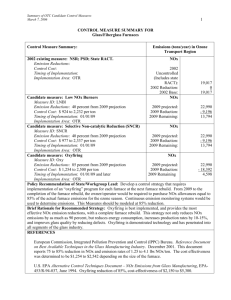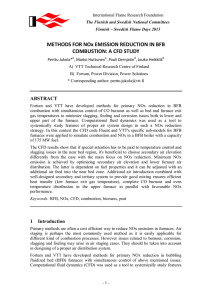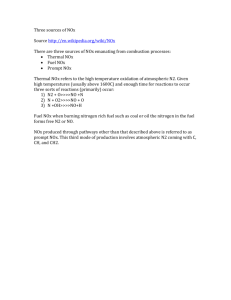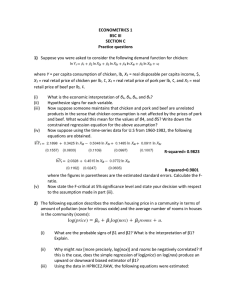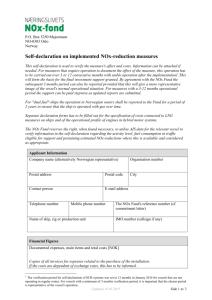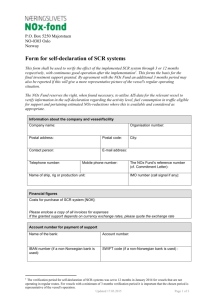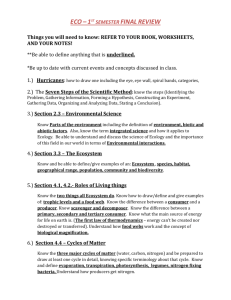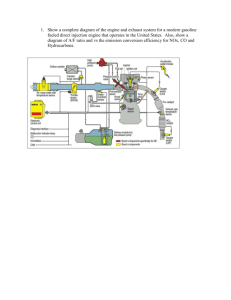Methods for NOx Emission Reduction in BFB Combustion A CFD Study
advertisement
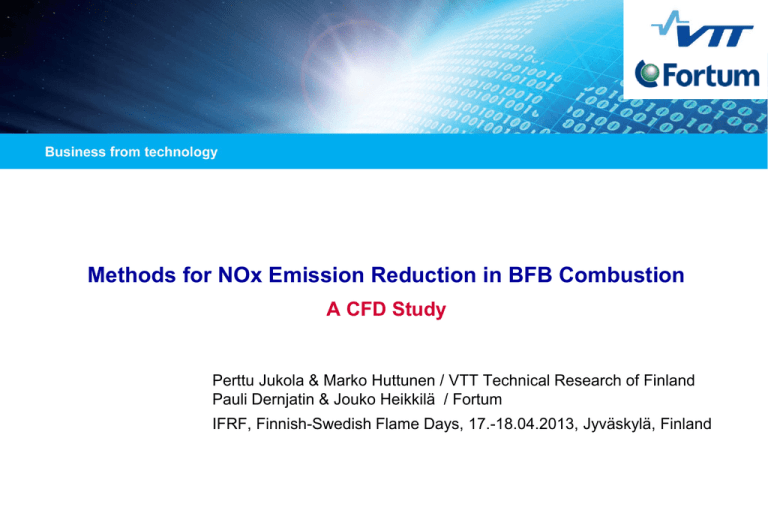
Methods for NOx Emission Reduction in BFB Combustion A CFD Study Perttu Jukola & Marko Huttunen / VTT Technical Research of Finland Pauli Dernjatin & Jouko Heikkilä / Fortum IFRF, Finnish-Swedish Flame Days, 17.-18.04.2013, Jyväskylä, Finland 1.11.2012 2 General idea of air staging in BFB boilers Main air introduction levels 1’ry air + FGR (from bed) 2’ry 3’ry Zone + additional air to zone I III Combustion zones I. bed II. 2’ry III. 3’ry 3’ry 2’ry 3’ry furnace exit Zones I & II operated with stoichiometric ratio (SR) < 1 and zone III with SR > 1 for NOx control Zone 2’ry additional air II Zone I 1’ry + FGR 1.11.2012 3 New air staging techniques for NOx emission reduction in BFB combustion Alternative A NOx control additional air to zone I improved mixing of fuel and air enhanced NOx reduction zone I reasonably high SR NOx reduction in zones I & II Alternative B low furnace & bed T control no additional air to zone I e.g. if high furnace volumetric loading compromised NOx performance zone I low SR Main NOx reduction in zone II o A or B chosen based on furnace design, dimensioning and typical mode of operation SR = Stoichiometric Ratio 1.11.2012 4 A BFB boiler CFD modelling study Furnace capacity 175 MWfuel 100 % MCR Fuel mixture peat + biomass base case (typical) peat/ bio = 30/70 o energy basis additional studies peat 100 % bio 100 % Main topic: NOx formation effect of 2’ry air elevation low furnace air distribution Other topics burnout indicator: CO at furnace exit upper furnace corrosion and fouling tendency indicator: furnace exit gas temperature (FEGT) Plane of T and CO reporting 1.11.2012 CFD modelling: Fuel properties Fuel analysis Peat Biomass Moisture [w-%] 54 52 Ultimate [w-%, dry]: C H O N S + ash + others 55.3 5.5 31.7 1.7 5.8 51.2 5.6 38.1 0.4 4.7 Proximate [w-%, dry]: volatiles char FR (fuel ratio) 68.0 26.2 0.39 80.0 15.3 0.19 LHV [MJ/kg, dry] 21.5 18.1 5 6 1.11.2012 BFB boiler CFD: NOx model validation Validation case: 175 MWfuel, peat/biomass = 30/70 (reference for further studies) Temperature max min O2 NO 1.11.2012 7 BFB boiler CFD: Effect of 2’ry air elevation (alternative B) 2’ry air elevations studied: EL-3 NOx / CO (arb. units) comp. to ref. ΔT [ C] comp. to ref. EL-1 Alternative B: no additional air to zone I Zone I SR: low Zone II SR < 1.0 Zone III SR 1.2 Fuel mixture: peat/bio = 30/70 Alternative B: lower 2’ry position beneficial for NOx, CO and FEGT 1.11.2012 8 BFB boiler CFD: Effect of 2’ry air elevation (alternative A) 2’ry air elevations studied: EL-3 EL-2 EL-1 ΔT [ C] comp. to ref. NOx / CO (arb. units) comp. to ref. Alternative A: additional air to zone I Zone I SR: higher comp. to B o SR not optimal here Zone II SR < 1.0 Zone III SR 1.2 Fuel mixture: peat/bio = 30/70 Alternative A: higher 2’ry position beneficial for NOx but not necessarily for CO and FEGT. Let’s choose elevation EL-2 for further investigations 1.11.2012 9 BFB boiler CFD: Zone I air distribution (alternative A) *) Peat: CO in figure = 1/3 x actual CO ΔT [ C] comp. to ref. Zone I air distribution adjusted by changing add. air to 2’ry air ratio SR1 rises from A to C Zone II SR < 1.0 (constant in all cases) Zone III SR 1.2 (constant in all cases) (* (* PEAT/BIO = 30/70 BIO 100% NOx / CO (arb. units) comp. to ref. PEAT 100% Simultaneous decrease in FEGT, CO (except for peat) and NOx when “optimizing” zone I SR 1.11.2012 10 BFB boiler CFD: Improving mixing (2’ry and 3’ry) 3’ry in original case 3’ry in improved case Plane of T and CO reporting NOx / CO (arb. units) ΔT [ C]. PEAT/BIO = 30/70 No drawback in NOx, no change in FEGT (avg.), remarkable decrease in peak T and CO 1.11.2012 11 Summary Fortum and VTT have developed new methods aiming for reduction of NOx emissions from BFB boilers by air staging Lower furnace SR and 2’ry air system are optimized and designed case by case based on the furnace design and normal operation characteristics NOx emission, burnout and upper furnace temperature (fouling) can be controlled simultaneously with a proper air system design and optimized air distribution Where necessary, specific solutions are available for low furnace slagging and corrosion problems as well 1.11.2012 Contact information Perttu Jukola, VTT Technical Research Centre of Finland, perttu.jukola@vtt.fi, +358 20 722 5098 Marko Huttunen, VTT Technical Research Centre of Finland, marko.huttunen@vtt.fi, +358 20 722 5053 Pauli Dernjatin, Fortum, Power Division, Power Solutions, pauli.dernjatin@fortum.com, +358 50 453 2025 Jouko Heikkilä, Fortum, Power Division, Power Solutions, jouko.heikkila@fortum.com, +358 50 453 4514 12 1.11.2012 VTT creates business from technology 13
